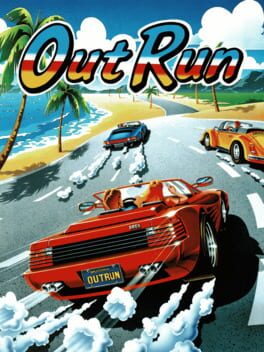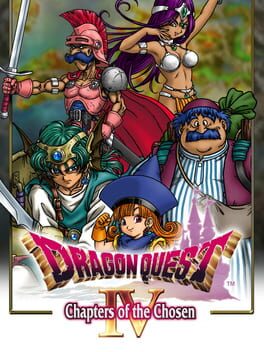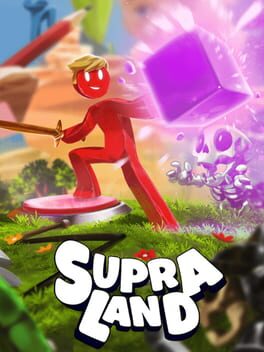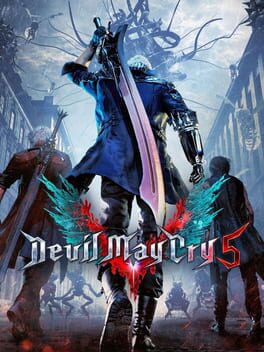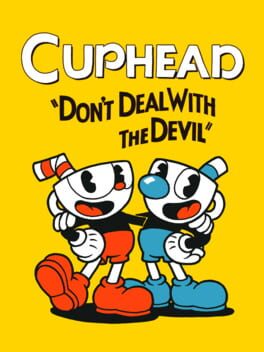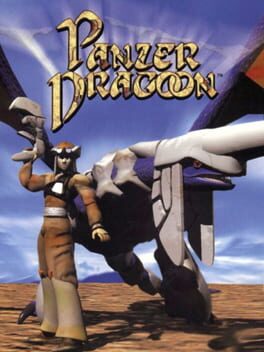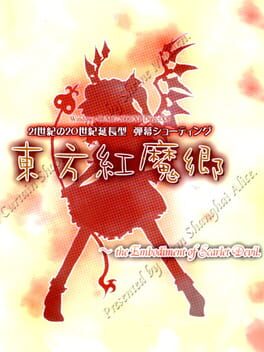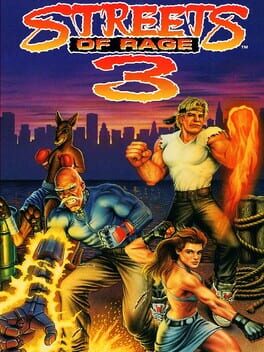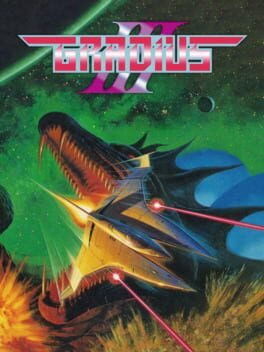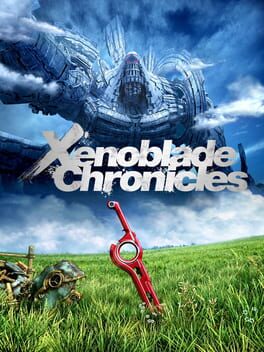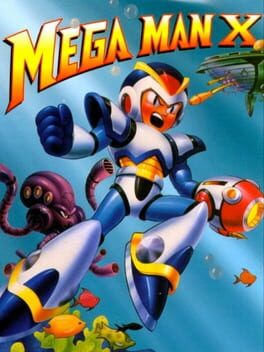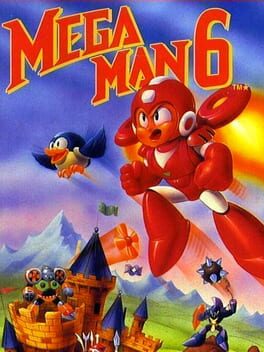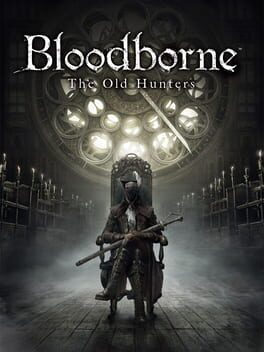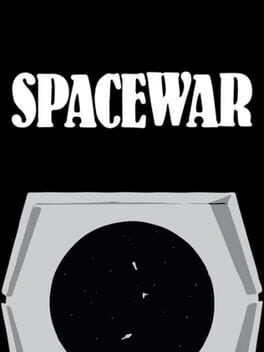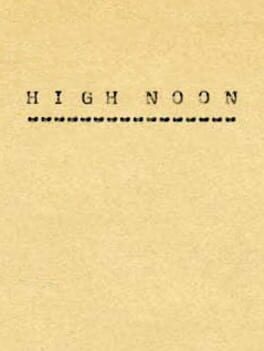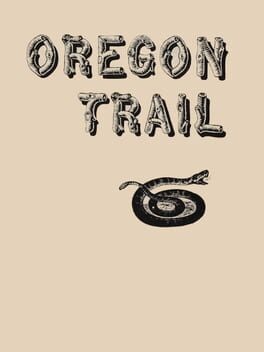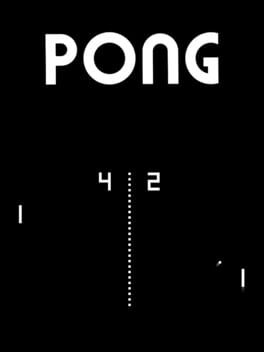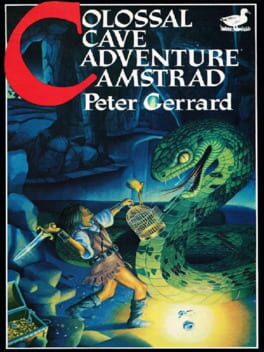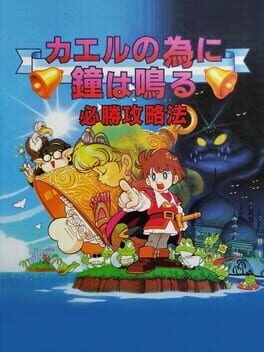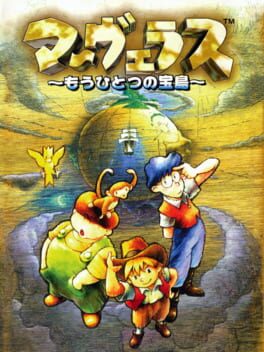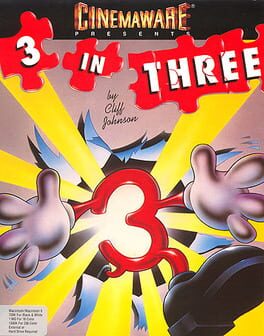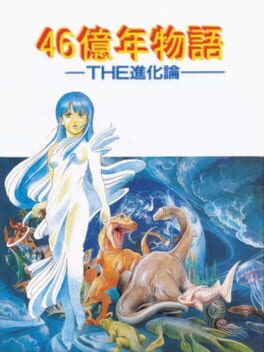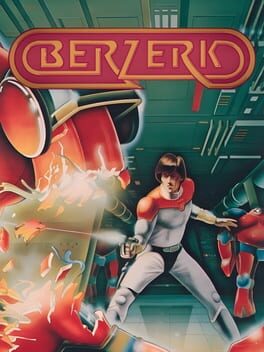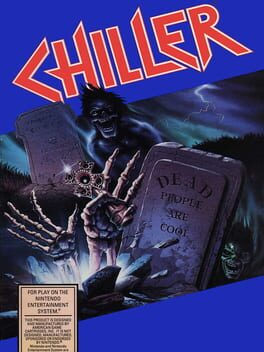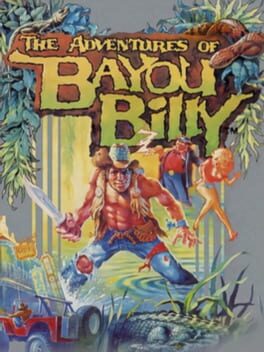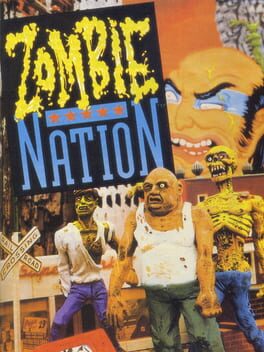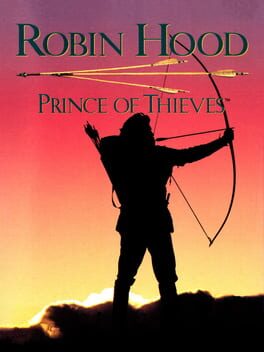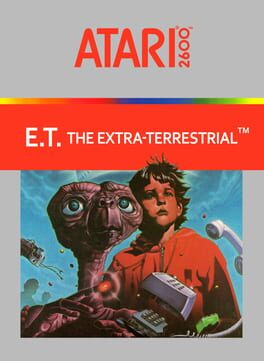jamz92
25 reviews liked by jamz92
The beginning of the Kain series started with a bang in 1996. So there shouldn’t be a problem with a sequel right? Oh, I wish. Turns out Silicon Knights(SK) who owned the IP filed a injunction against Crystal Dynamics(CD). We don’t need to get into the nitty gritty here, except to know they were able to make a sequel to Blood Omen(BO). This is important since Amy Hennig made her directorial debut here when previously she worked on BO. For those unfamiliar, she would go off to work on the Uncharted franchise later on. And she is crucial to understand, when I talk about the underlying problems I had with Soul Reaver(SR).
Moving forward in time to 2022. Square Enix(who acquired CD later on) sold their western studios. Eidos, Crystal Dynamics, and Square Enix Montreal for money. Among the plethora of IPs gathered. Two come to mind. Legacy of Kain and Soul Reaver. To none other than the Embracer company. Who has been laying off and closing down their recently bought studios as of late. So I'm here with a heavy heart to tell you guys if we don't see a remake/remaster officially, I will gently point you all towards an excellent Raina Audron’s HD Remaster for the Flycast Dreamcast emulator. Faithfully redone with higher quality textures as an appropriate unofficial alternative instead of waiting for one that may never come. Despite rumors of one in development.
And while there is a PC version on Steam. You cannot currently buy. And the sketchy PC mod doesn’t help matters which GOG is a part of as well. Excusing all those matters. I'll focus purely on the base game. Thankfully, you don’t need to play the previous entry to know what happens. They summarize the events that occurred before. Play it if you wish. I recommend it only for those seeking out why Kain acts the way he does in a Legend of Zelda spliced with a bloodsucker’s tale. The sequel continues the dark gothic storytelling fans have been waiting for. With a return to Nosgoth.
The supernatural setting we start our journey once more. Thousands of years after the events of the first. In the beginning cutscene. We see Raziel, a vampire lieutenant of Kain’s forces who has served him for a millennium. Who after receiving new wings in a fit of transformation. Kain inspects the new appendages while admiring them. Unfortunately, the new attachments did not endear him at all to his boss. Abruptly and forcefully rips the wings and orders his other lieutenants to cast him down into the abyss. An eternity passes and a mysterious voice resurrects our titular protagonist to become his ‘Soul Reaver.’ with a dreadfully cool new look and powers he’s off on a quest for vengeance against his former boss.
Will we face him in the end? Good question. Not sure. We’ll have to traverse through a 3D Metroidvania in a 3rd person perspective with no loading screens before we find our answers. And boy oh boy was this a welcome surprise. The gameplay has shifted in a whole new direction from the top-down perspective of the first installment. Overhauled to the teeth, maximizing numerous advantages of the 3D era. Our hero can move in any direction, jump higher than his base vault, glide in the air, hack and slash enemies. Hold any manner of weaponry without being subject to the gods of durability and throw them at any time. Capable of using mystical abilities like glyphs. The eldritch energy pertains to each element. Sparingly used, they provide a massive advantage against mobs of enemies. Heck one glyph can stop time for everyone excluding our dude! One innate ability is the power to shift between the material world into the spectral world and vice-versa. This sole skill changed the whole gameplay formula. And made my playthrough fascinating to test.
Plane shifting has massive benefits. For one. He has two health bars. As his health slowly depletes in the physical realm. He can apparate to the spectral realm and recover his health there. Incurring no HP penalty either. Dude can literally suck the souls from defeated enemies in either realm to restore his vitality. But that’s not all. Oh no. Both levels distort in weird ways. If he is in the physical domain and encounters an obstacle. All he has to do is switch to the other domain and voila! The path is open! I encountered multiple obstacles like jumping across chasms and unlocking a new path where previously a dead-end was in sight. Additionally, the ability allows one to go underwater without any penalty. Whereas going back to the real world causes Raziel to immediately transition to the other field. The mechanic works seamlessly when encountering puzzles. Usually, physical box placement is designed with several to a dozen steps or more to solve. Sometimes, CD will throw in a handful of switches and levers for good measure. For anyone who played Vagrant Story. The block elements are similar here. Where you’ll have to move them to open a new path or slot them in various places according to the imagery on the walls. Completing the art so to speak. Switches can run on timers, so phase-shifting to another dimension stops time. Making it instrumental if low on time. I didn’t have too much trouble with the puzzles. Controlling how to manage box placement was a bigger issue early on. Solvable once I read the manual. Perhaps one or two overstayed their welcome in a certain region. But the rest from then on felt balanced. A nice change of pace from the constant exploring.
Aside from the freedom to explore in any direction within reason. The boss encounters operate much like their predecessor. Being designed Legend of Zelda-like. As I defeated Raz's old brethren in various arenas I was struck once again by how I had to utilize the environment to my advantage and any tricks I learned prior. Picking up a weapon and slamming it at the boss once all appendages were gone. Use my plane-shifting powers to recuperate and find weaknesses and in some cases lure my opponent away like a rod and carrot stick for bait. They were fun to tackle and a nice reprieve from the Metroidvania world through Nosgoth’s moody areas. Gifting our main protagonist with new abilities. Thereby allowing the player to overcome obstacles with ease. Adding a gratifying reward upon completing a ‘dungeon’ before moving on to the next. And honestly? My motivation to exact retribution on Kain was still at an all-time high as I progressed through each boss encounter. I mean who wouldn’t if your past employer betrayed you in a heinous manner? Look at Raziel waving a “Me!” flag.
Before our hero kicks off a rant on vengeance I must talk about the world. Nosgoth has radically changed. Where previously it was teeming with life. Now it is a world of fear and decay. Gone are the bustling settlements of humans with a manic hatred for all things vampiric in nature. Iconic locations I sought with a wanderlust fervor, have withered away. Now nothing more than fables in the wind and myths of werewolves, ghosts, and ghouls have been reduced to fairy tales. Nosgoth of today. I dread walking and breathing these unfamiliar locales resembling more of a dark moody post-apocalypse as if someone sucked the very life from the land. Vampire creatures reign supreme. Each one is distinct from others based on their biome and clan affiliation. If you thought regular bloodsuckers were a threat. Wait till you see spider and water variants! EW! Humans are near extinct. With pockets of resistance thriving in some far-off places. However, entering such a place seems ill-advised since wide-open fields full of life are a very rare sight nowadays. Replaced with a foreboding harsh atmosphere accompanied by maze-like passages and decent platformer segments. I passed through empty caverns and short corridors while solving puzzle rooms to gain access to new glyph spells or by once defeating a boss in a main area am I endowed with a new traversal ability. Allowing one to venture onwards to new roads less traveled and hidden detours and shortcuts. Although, a new power doesn’t solve all my dilemmas. The spectral dimension is haunting, filled with a ghastly atmosphere that is both depressing and gloomy. A different color palette is injected every time Raziel shifts and with it, new ghostly enemies are summoned. To harm him like wraiths and bloodsucking dementor-like beings. Shudders. The territory makes the real and unreal more pronounced where things become larger or smaller as they appear. So have courage. To embrace the unfamiliar expanse whenever plane-shifting occurs.
The sound design is dynamic. Where a large chunk of my feelings is borderline dislike, except there's another big side of appreciating the technical achievement. The former is vexing and disconnecting in the soundscape. Feels largely oppressing in the foreground with low drums hitting a hypnotic rhythm as a faint choir chants in the background in intervals to imply the divine and further adds to the depressing, lonely, unsettling, creepy ambiance. In a dying world, I was fraught with anxiety wrapped in a tight ball around myself. Reminded me a bit of the soundscape of Silent Hill. However, this one felt less insidious and far more bearable in certain respects. Some select tracks are triumphant and give off a feeling of bravery in spite of the encompassing tracks displaying dread. Not a negative at all. I find it hard to say I like a majority of tracks while playing. On the other hand, I'm amazed by technological advancement. Looking at each piece. I’m amazed how the composer Kurt Harland from Information Society managed to create a vast library of tunes to work on and multiple variations. Whereas in the predecessor there were only nineteen tracks. Here we have one hundred eighty-one. That’s an insane improvement. And a new composer to boot! After listening to the entire game's soundtrack, I found it similar to how the works of Keichi Okabe and his studio band Monaca techniques in the franchise for Nier. From Okabe, the sound design when the soundtrack was ripped. Had dynamic, medium, quiet, no vocals, 8-bit versions for each location and iconic event. Not all of them, but I would say a good size. Allowing the player to smoothly segue into the following track. While not as seamless as Nier: Automata Harland's implementation in Soul Reaver, works similarly. Special thanks go out to Raina Audron who recorded and assembled the full depth of the OST in full so we can see how far Harland worked on composing 11 hours of music. From what Audron states. Each piece " indoors/outdoors (normal+suspenseful), puzzle, danger, and combat... changes dynamically according to the situation on the screen." Meaning we have a similar occurrence here with Okabe in creating multiple variations of a track. That is fascinating and honestly incredible to hear to this extent for a PSX title! As an example you can see most of the track listings here on YouTube. I am deeply amazed, surprised how largely unnoticed and underrated the sheer sound design permeates throughout. One largely not analyzed to an extent I’ve seen online. Curious if other IPs during the fifth-generation console era made comparable strides such as Harland and Okabe on impressive soundscape achievements.
As much as I love everything that Soul Reaver elevated from Blood Omen I do have some mixed feelings. And this isn’t a positive or a negative. Simply concerns I had during my playthrough that others may find useful to hear beyond the praise I sprouted above.
First, the story is a bit of a letdown. But narratively an improvement beyond BO's narrative. We don’t receive as many voiced monologues as the previous game. Telling a subtly compelling character development from the beginning to the very end, where we see Kain shift from a human into something far more sinister. Here we don’t get that as much. Missing lore drips. Voiced monologues of Raziel poetically waxing his thoughts both internally or externally to the player could've been far more utilized here than the sense of silence covering a large amount of distance. And this I feel is a missed opportunity to call back to the series' roots by detailing the story-telling through a voiced narrative. In the previous installment, Kain would narrate about items he finds and narrate their description to you upon cursor highlight. Effectively luring me further into the worldbuilding and NPCs. Speaking of NPCs, there's almost no one. Aside from one NPC and your new boss. Who will chime in at times to have a chat like a god speaking to his new disciple. Much like how the parasite speaks to Eddie Brock from the Venom(2018) film. Except the mysterious being isn't exactly within our titular guy. Somehow always with him, yet not physically.
Granted, he still opens their mouth at critical moments, usually during plot beats of cutscenes and during intro-boss battles. And to our new hero's credit, I resonated far more with him than his former employer. Pretty likable guy I initially thought would be far more angsty, moody full of hate. Far from it! The dude was focused and sought reason without letting his emotions boil over his spirit. Regardless of his dour appearance, Michael Bell's voice lends a unique cadence to bringing our wraith's character to life. Making my overall experience not so isolating. His actions mirror my incentive to push forward. In the face of desiring to know more about what happened to Kain. Anything deeper between their relationship? Were there any more reasons why he ripped the wings? Why has the world suffered like this further and why have clans of vampires which have risen to prominence and discussed a fair amount, thrown to the curbside? Speaking of being thrown onto the curb. The ending without going into spoilers feels unfulfilling a tad.
And this makes sense. According to Amy Hennig, SR1 suffered development troubles due to the injunction. Recent news started to arise about the edits of an unfinished product. Hennig set the record straight by stating in April of 2000. “...We simply just felt that we were compromising Kain's epic story by trying to cram too many major events into the last 10% of Soul Reaver.” - If I were in her position I would divide the game into two. She called this a “blessing in disguise” allowing the ideas, cut content, and story to flourish here rather than cramming everything and delaying. Her response felt appropriate and validated a lot of my disconcerting thoughts on the shortcomings I gathered upon finishing. And to be fair as a whole, I think the game is still fine for what her team tried to achieve. I'm grateful for what is already here and not rushed, broken, or horribly missing plot details I think were vital to know. A safe product at the end of the day without being too ambitious.
Second, loading any save file or dying. Has the player start from the 1st zone. This results in kinda of tedious backtracking for the unaware. You’ll need to use gates that act as a fast travel system to head to your next destination. Sadly they're only denoted by a symbol. And no menu is available or font to visualize where the path leads unless I walk through. Reminds me of Stargate. Lacking the wormhole loading. Rather you move forward without any delay or transition to another screen to load the new area. Pretty much an uninterrupted travel system. Thankfully, more often than not the waypoints are spread a decent amount from before entering a dungeon and before a boss encounter. I suggest copying the image and putting the pic on a Google Doc or notepad for reference. You can go traditional and draw the piece on paper to help! Vital to recall where I had already trodden. Should be noted dying in both dimensions returns the player to the start. Felt this wasn’t too punishing. Since you have plenty of time to recover vitality in either realm. Wasn't a drag either, I was able to adjust to the flow quickly.
Third, in a minor way, a hurdle may occur for the camera. It can take some getting used to. Though thankfully not a major hassle and you will fight it sometimes when fighting enemies and checking your surroundings. And I didn’t realize until midway I could quick turn by hitting the directional pad on the left or right and transitioning to first-person point of view mode to check my surroundings by hitting both L2 and R2 buttons. Useful to see the verticality in level design and any secrets tucked away.
Fourth, aside from no title markers when using gates to fast travel. or a hints menu. Hand-holding here is very minimal. Therefore, players must be aware of their sense of location. Keeping a map of Nosgoth helped tremendously and I'll post a link below to help newcomers. Didn't use it until I reached the 70% mark and after exhausting as much backtracking as I could without help. Keeping these details in mind, I think are crucial to progress further. One could speak to your new boss and another being you'll meet later on and apprise Raziel on his next objective. And that's the only gentle reminder of where to head out. Good idea to check again if you’re lost and need a gentle nudge. Though be warned, you may need to decipher the Shakespearean-like dialogue when given. Not a big deal, since they’ll reference past locations. And for a Metroidvania, I think they do a serviceable job toeing the line on not being too cryptic and not too easy, I need a journalist mode to persevere. Most if not all of my frustration was a consequence of rushing without thinking. I advise taking a step to re-collect your thoughts. Patiently recalling prior distinct areas visited to arrive at a sensibly achievable goal.
More than two decades ago, I had the pleasure of playing the title when I was a kid. Never finished it since I was very confused about my true objective. And I vividly remember my first impressions. Badass FMV in the beginning, hot meh on nearly everything else. Confusing passages, dull color palettes, and a combat system that felt clunky. Now as an adult revisiting. I'm on the opposite spectrum for my first impressions. Where now I think its not meh. The confusion is still there, though tempered with patience and a drive to explore the gloomy post-apocalyptic world with some platforming segments. Nosgoth’s murky setting is a stark contrast to the lively world from before. Adding incentive to my vengeful goal of what happened here. A decent combat system that can take some getting used to along with the camera still left me completely enthralled in the presentation. The voiced narrative continues to be strong although lessened by switching to a new protagonist, but is equally as fascinating to learn about. The solid writing continues to leave me hungry to know more about the underlying narrative. Satisfying and self-contained to an extent like the Trails or Xenoblade games. The first delved into a nuance-filled story about a human who becomes a vampire and struggles with darker impulses. A shadowy tale in a dimly lit fantasy environment. SR meanwhile flips the scripts and asks the confused avenger Raziel to embark on a quest for vengeance. And understandably so! Man was betrayed by his employer after faithfully serving him for a millennium. Only to be betrayed because he had wings and Kain did not?! WELL SEE HER- Coughs. Anyway, I think the Dreamcast remaster is a great way for anyone looking to dive into the series nowadays rather than resorting to a sketchy PC mod. Emulation or playing via console are also fine choices. While I did have some mixed feelings, muddling my final thoughts. Ultimately they're not as egregious as my time in Blood Omen. Thus Soul Reaver is a worthy gateway to try for folks interested in a seamless 3D metroidvania with a rare shifting mechanic followed by an uncommonly gothic story in the Legacy of Kain saga.
8/10
References and additional material:
1998 - Knights fight for Kain article - injunction
2022 - Square Enix sells off IPs and studios
2023 - Embracer & layoffs throughout the year
Dreamcast remaster of Soul Reaver 1
Rumors for an official remaster
Sketchy Soul Reaver PC mod
Raina Audron's work on Soul Reaver 1. Quote is from a readme
2000 - Soul Reaver Response - Amy Hennig responds to reports about the game being unfinished.
—
Helpful Links - Map of Nosgoth - Incomplete OST - Setting summary of Nosgoth - Spoiler-free SR1 walkthrough - Before I play tips on SR1 - There was no section previously. So I submitted my own tips. Hope this helps any newcomers!
Who owns the Legacy of Kain IP?
Moving forward in time to 2022. Square Enix(who acquired CD later on) sold their western studios. Eidos, Crystal Dynamics, and Square Enix Montreal for money. Among the plethora of IPs gathered. Two come to mind. Legacy of Kain and Soul Reaver. To none other than the Embracer company. Who has been laying off and closing down their recently bought studios as of late. So I'm here with a heavy heart to tell you guys if we don't see a remake/remaster officially, I will gently point you all towards an excellent Raina Audron’s HD Remaster for the Flycast Dreamcast emulator. Faithfully redone with higher quality textures as an appropriate unofficial alternative instead of waiting for one that may never come. Despite rumors of one in development.
And while there is a PC version on Steam. You cannot currently buy. And the sketchy PC mod doesn’t help matters which GOG is a part of as well. Excusing all those matters. I'll focus purely on the base game. Thankfully, you don’t need to play the previous entry to know what happens. They summarize the events that occurred before. Play it if you wish. I recommend it only for those seeking out why Kain acts the way he does in a Legend of Zelda spliced with a bloodsucker’s tale. The sequel continues the dark gothic storytelling fans have been waiting for. With a return to Nosgoth.
The supernatural setting we start our journey once more. Thousands of years after the events of the first. In the beginning cutscene. We see Raziel, a vampire lieutenant of Kain’s forces who has served him for a millennium. Who after receiving new wings in a fit of transformation. Kain inspects the new appendages while admiring them. Unfortunately, the new attachments did not endear him at all to his boss. Abruptly and forcefully rips the wings and orders his other lieutenants to cast him down into the abyss. An eternity passes and a mysterious voice resurrects our titular protagonist to become his ‘Soul Reaver.’ with a dreadfully cool new look and powers he’s off on a quest for vengeance against his former boss.
Will we face him in the end? Good question. Not sure. We’ll have to traverse through a 3D Metroidvania in a 3rd person perspective with no loading screens before we find our answers. And boy oh boy was this a welcome surprise. The gameplay has shifted in a whole new direction from the top-down perspective of the first installment. Overhauled to the teeth, maximizing numerous advantages of the 3D era. Our hero can move in any direction, jump higher than his base vault, glide in the air, hack and slash enemies. Hold any manner of weaponry without being subject to the gods of durability and throw them at any time. Capable of using mystical abilities like glyphs. The eldritch energy pertains to each element. Sparingly used, they provide a massive advantage against mobs of enemies. Heck one glyph can stop time for everyone excluding our dude! One innate ability is the power to shift between the material world into the spectral world and vice-versa. This sole skill changed the whole gameplay formula. And made my playthrough fascinating to test.
Plane shifting has massive benefits. For one. He has two health bars. As his health slowly depletes in the physical realm. He can apparate to the spectral realm and recover his health there. Incurring no HP penalty either. Dude can literally suck the souls from defeated enemies in either realm to restore his vitality. But that’s not all. Oh no. Both levels distort in weird ways. If he is in the physical domain and encounters an obstacle. All he has to do is switch to the other domain and voila! The path is open! I encountered multiple obstacles like jumping across chasms and unlocking a new path where previously a dead-end was in sight. Additionally, the ability allows one to go underwater without any penalty. Whereas going back to the real world causes Raziel to immediately transition to the other field. The mechanic works seamlessly when encountering puzzles. Usually, physical box placement is designed with several to a dozen steps or more to solve. Sometimes, CD will throw in a handful of switches and levers for good measure. For anyone who played Vagrant Story. The block elements are similar here. Where you’ll have to move them to open a new path or slot them in various places according to the imagery on the walls. Completing the art so to speak. Switches can run on timers, so phase-shifting to another dimension stops time. Making it instrumental if low on time. I didn’t have too much trouble with the puzzles. Controlling how to manage box placement was a bigger issue early on. Solvable once I read the manual. Perhaps one or two overstayed their welcome in a certain region. But the rest from then on felt balanced. A nice change of pace from the constant exploring.
Aside from the freedom to explore in any direction within reason. The boss encounters operate much like their predecessor. Being designed Legend of Zelda-like. As I defeated Raz's old brethren in various arenas I was struck once again by how I had to utilize the environment to my advantage and any tricks I learned prior. Picking up a weapon and slamming it at the boss once all appendages were gone. Use my plane-shifting powers to recuperate and find weaknesses and in some cases lure my opponent away like a rod and carrot stick for bait. They were fun to tackle and a nice reprieve from the Metroidvania world through Nosgoth’s moody areas. Gifting our main protagonist with new abilities. Thereby allowing the player to overcome obstacles with ease. Adding a gratifying reward upon completing a ‘dungeon’ before moving on to the next. And honestly? My motivation to exact retribution on Kain was still at an all-time high as I progressed through each boss encounter. I mean who wouldn’t if your past employer betrayed you in a heinous manner? Look at Raziel waving a “Me!” flag.
Before our hero kicks off a rant on vengeance I must talk about the world. Nosgoth has radically changed. Where previously it was teeming with life. Now it is a world of fear and decay. Gone are the bustling settlements of humans with a manic hatred for all things vampiric in nature. Iconic locations I sought with a wanderlust fervor, have withered away. Now nothing more than fables in the wind and myths of werewolves, ghosts, and ghouls have been reduced to fairy tales. Nosgoth of today. I dread walking and breathing these unfamiliar locales resembling more of a dark moody post-apocalypse as if someone sucked the very life from the land. Vampire creatures reign supreme. Each one is distinct from others based on their biome and clan affiliation. If you thought regular bloodsuckers were a threat. Wait till you see spider and water variants! EW! Humans are near extinct. With pockets of resistance thriving in some far-off places. However, entering such a place seems ill-advised since wide-open fields full of life are a very rare sight nowadays. Replaced with a foreboding harsh atmosphere accompanied by maze-like passages and decent platformer segments. I passed through empty caverns and short corridors while solving puzzle rooms to gain access to new glyph spells or by once defeating a boss in a main area am I endowed with a new traversal ability. Allowing one to venture onwards to new roads less traveled and hidden detours and shortcuts. Although, a new power doesn’t solve all my dilemmas. The spectral dimension is haunting, filled with a ghastly atmosphere that is both depressing and gloomy. A different color palette is injected every time Raziel shifts and with it, new ghostly enemies are summoned. To harm him like wraiths and bloodsucking dementor-like beings. Shudders. The territory makes the real and unreal more pronounced where things become larger or smaller as they appear. So have courage. To embrace the unfamiliar expanse whenever plane-shifting occurs.
The sound design is dynamic. Where a large chunk of my feelings is borderline dislike, except there's another big side of appreciating the technical achievement. The former is vexing and disconnecting in the soundscape. Feels largely oppressing in the foreground with low drums hitting a hypnotic rhythm as a faint choir chants in the background in intervals to imply the divine and further adds to the depressing, lonely, unsettling, creepy ambiance. In a dying world, I was fraught with anxiety wrapped in a tight ball around myself. Reminded me a bit of the soundscape of Silent Hill. However, this one felt less insidious and far more bearable in certain respects. Some select tracks are triumphant and give off a feeling of bravery in spite of the encompassing tracks displaying dread. Not a negative at all. I find it hard to say I like a majority of tracks while playing. On the other hand, I'm amazed by technological advancement. Looking at each piece. I’m amazed how the composer Kurt Harland from Information Society managed to create a vast library of tunes to work on and multiple variations. Whereas in the predecessor there were only nineteen tracks. Here we have one hundred eighty-one. That’s an insane improvement. And a new composer to boot! After listening to the entire game's soundtrack, I found it similar to how the works of Keichi Okabe and his studio band Monaca techniques in the franchise for Nier. From Okabe, the sound design when the soundtrack was ripped. Had dynamic, medium, quiet, no vocals, 8-bit versions for each location and iconic event. Not all of them, but I would say a good size. Allowing the player to smoothly segue into the following track. While not as seamless as Nier: Automata Harland's implementation in Soul Reaver, works similarly. Special thanks go out to Raina Audron who recorded and assembled the full depth of the OST in full so we can see how far Harland worked on composing 11 hours of music. From what Audron states. Each piece " indoors/outdoors (normal+suspenseful), puzzle, danger, and combat... changes dynamically according to the situation on the screen." Meaning we have a similar occurrence here with Okabe in creating multiple variations of a track. That is fascinating and honestly incredible to hear to this extent for a PSX title! As an example you can see most of the track listings here on YouTube. I am deeply amazed, surprised how largely unnoticed and underrated the sheer sound design permeates throughout. One largely not analyzed to an extent I’ve seen online. Curious if other IPs during the fifth-generation console era made comparable strides such as Harland and Okabe on impressive soundscape achievements.
As much as I love everything that Soul Reaver elevated from Blood Omen I do have some mixed feelings. And this isn’t a positive or a negative. Simply concerns I had during my playthrough that others may find useful to hear beyond the praise I sprouted above.
First, the story is a bit of a letdown. But narratively an improvement beyond BO's narrative. We don’t receive as many voiced monologues as the previous game. Telling a subtly compelling character development from the beginning to the very end, where we see Kain shift from a human into something far more sinister. Here we don’t get that as much. Missing lore drips. Voiced monologues of Raziel poetically waxing his thoughts both internally or externally to the player could've been far more utilized here than the sense of silence covering a large amount of distance. And this I feel is a missed opportunity to call back to the series' roots by detailing the story-telling through a voiced narrative. In the previous installment, Kain would narrate about items he finds and narrate their description to you upon cursor highlight. Effectively luring me further into the worldbuilding and NPCs. Speaking of NPCs, there's almost no one. Aside from one NPC and your new boss. Who will chime in at times to have a chat like a god speaking to his new disciple. Much like how the parasite speaks to Eddie Brock from the Venom(2018) film. Except the mysterious being isn't exactly within our titular guy. Somehow always with him, yet not physically.
Granted, he still opens their mouth at critical moments, usually during plot beats of cutscenes and during intro-boss battles. And to our new hero's credit, I resonated far more with him than his former employer. Pretty likable guy I initially thought would be far more angsty, moody full of hate. Far from it! The dude was focused and sought reason without letting his emotions boil over his spirit. Regardless of his dour appearance, Michael Bell's voice lends a unique cadence to bringing our wraith's character to life. Making my overall experience not so isolating. His actions mirror my incentive to push forward. In the face of desiring to know more about what happened to Kain. Anything deeper between their relationship? Were there any more reasons why he ripped the wings? Why has the world suffered like this further and why have clans of vampires which have risen to prominence and discussed a fair amount, thrown to the curbside? Speaking of being thrown onto the curb. The ending without going into spoilers feels unfulfilling a tad.
And this makes sense. According to Amy Hennig, SR1 suffered development troubles due to the injunction. Recent news started to arise about the edits of an unfinished product. Hennig set the record straight by stating in April of 2000. “...We simply just felt that we were compromising Kain's epic story by trying to cram too many major events into the last 10% of Soul Reaver.” - If I were in her position I would divide the game into two. She called this a “blessing in disguise” allowing the ideas, cut content, and story to flourish here rather than cramming everything and delaying. Her response felt appropriate and validated a lot of my disconcerting thoughts on the shortcomings I gathered upon finishing. And to be fair as a whole, I think the game is still fine for what her team tried to achieve. I'm grateful for what is already here and not rushed, broken, or horribly missing plot details I think were vital to know. A safe product at the end of the day without being too ambitious.
Second, loading any save file or dying. Has the player start from the 1st zone. This results in kinda of tedious backtracking for the unaware. You’ll need to use gates that act as a fast travel system to head to your next destination. Sadly they're only denoted by a symbol. And no menu is available or font to visualize where the path leads unless I walk through. Reminds me of Stargate. Lacking the wormhole loading. Rather you move forward without any delay or transition to another screen to load the new area. Pretty much an uninterrupted travel system. Thankfully, more often than not the waypoints are spread a decent amount from before entering a dungeon and before a boss encounter. I suggest copying the image and putting the pic on a Google Doc or notepad for reference. You can go traditional and draw the piece on paper to help! Vital to recall where I had already trodden. Should be noted dying in both dimensions returns the player to the start. Felt this wasn’t too punishing. Since you have plenty of time to recover vitality in either realm. Wasn't a drag either, I was able to adjust to the flow quickly.
Third, in a minor way, a hurdle may occur for the camera. It can take some getting used to. Though thankfully not a major hassle and you will fight it sometimes when fighting enemies and checking your surroundings. And I didn’t realize until midway I could quick turn by hitting the directional pad on the left or right and transitioning to first-person point of view mode to check my surroundings by hitting both L2 and R2 buttons. Useful to see the verticality in level design and any secrets tucked away.
Fourth, aside from no title markers when using gates to fast travel. or a hints menu. Hand-holding here is very minimal. Therefore, players must be aware of their sense of location. Keeping a map of Nosgoth helped tremendously and I'll post a link below to help newcomers. Didn't use it until I reached the 70% mark and after exhausting as much backtracking as I could without help. Keeping these details in mind, I think are crucial to progress further. One could speak to your new boss and another being you'll meet later on and apprise Raziel on his next objective. And that's the only gentle reminder of where to head out. Good idea to check again if you’re lost and need a gentle nudge. Though be warned, you may need to decipher the Shakespearean-like dialogue when given. Not a big deal, since they’ll reference past locations. And for a Metroidvania, I think they do a serviceable job toeing the line on not being too cryptic and not too easy, I need a journalist mode to persevere. Most if not all of my frustration was a consequence of rushing without thinking. I advise taking a step to re-collect your thoughts. Patiently recalling prior distinct areas visited to arrive at a sensibly achievable goal.
More than two decades ago, I had the pleasure of playing the title when I was a kid. Never finished it since I was very confused about my true objective. And I vividly remember my first impressions. Badass FMV in the beginning, hot meh on nearly everything else. Confusing passages, dull color palettes, and a combat system that felt clunky. Now as an adult revisiting. I'm on the opposite spectrum for my first impressions. Where now I think its not meh. The confusion is still there, though tempered with patience and a drive to explore the gloomy post-apocalyptic world with some platforming segments. Nosgoth’s murky setting is a stark contrast to the lively world from before. Adding incentive to my vengeful goal of what happened here. A decent combat system that can take some getting used to along with the camera still left me completely enthralled in the presentation. The voiced narrative continues to be strong although lessened by switching to a new protagonist, but is equally as fascinating to learn about. The solid writing continues to leave me hungry to know more about the underlying narrative. Satisfying and self-contained to an extent like the Trails or Xenoblade games. The first delved into a nuance-filled story about a human who becomes a vampire and struggles with darker impulses. A shadowy tale in a dimly lit fantasy environment. SR meanwhile flips the scripts and asks the confused avenger Raziel to embark on a quest for vengeance. And understandably so! Man was betrayed by his employer after faithfully serving him for a millennium. Only to be betrayed because he had wings and Kain did not?! WELL SEE HER- Coughs. Anyway, I think the Dreamcast remaster is a great way for anyone looking to dive into the series nowadays rather than resorting to a sketchy PC mod. Emulation or playing via console are also fine choices. While I did have some mixed feelings, muddling my final thoughts. Ultimately they're not as egregious as my time in Blood Omen. Thus Soul Reaver is a worthy gateway to try for folks interested in a seamless 3D metroidvania with a rare shifting mechanic followed by an uncommonly gothic story in the Legacy of Kain saga.
8/10
References and additional material:
1998 - Knights fight for Kain article - injunction
2022 - Square Enix sells off IPs and studios
2023 - Embracer & layoffs throughout the year
Dreamcast remaster of Soul Reaver 1
Rumors for an official remaster
Sketchy Soul Reaver PC mod
Raina Audron's work on Soul Reaver 1. Quote is from a readme
2000 - Soul Reaver Response - Amy Hennig responds to reports about the game being unfinished.
—
Helpful Links - Map of Nosgoth - Incomplete OST - Setting summary of Nosgoth - Spoiler-free SR1 walkthrough - Before I play tips on SR1 - There was no section previously. So I submitted my own tips. Hope this helps any newcomers!
Who owns the Legacy of Kain IP?
Final Fantasy IX
2000
OutRun
1986
Well, I finally got to play the original OutRun cabinet! The deluxe one to be specific, where the car you sit in physically shakes and turns you to match what's on screen. I thought it was pretty cool, but completely freaked my wife out when she tried it out lol. I've never been a fan of OutRun's premise I'll be honest - with it not being really a racing game, but more of a "beat the timer with a bunch of stuff in your way" kinda game, but OutRun in comparison to other car driving games at the time is GORGEOUS and plays like something we've never seen before this, allowing the player to really feel like they're in control of the car on-screen.
I'm sure if I spent more time with OutRun, I would eventually get a handle on how to play it properly, but when rating the game, I can't not rate it as anything lower than a 4-Star because this is one of those arcade games that completely revolutionized arcade history and became one of Sega's most successful cabinets to date. Gorgeous graphics, amazing music (implementing a radio to add to the immersion of driving - 12 years before GTA!), and unbelievable controls... you can even change gear! Every gamer should check OutRun out at least once in their life.
4/5
I'm sure if I spent more time with OutRun, I would eventually get a handle on how to play it properly, but when rating the game, I can't not rate it as anything lower than a 4-Star because this is one of those arcade games that completely revolutionized arcade history and became one of Sega's most successful cabinets to date. Gorgeous graphics, amazing music (implementing a radio to add to the immersion of driving - 12 years before GTA!), and unbelievable controls... you can even change gear! Every gamer should check OutRun out at least once in their life.
4/5
TLDR review: This is peak gaming.
Actual in depth review:
The story is completely unlike anything that came before it. The characters actually had unique goals and personalities. The story structure switched protags every few hours to get you accustomed to their tales and gameplay mechanics. Even the main antagonist had a reason behind his beliefs which was very uncommon in video games that were initially released before 1990.
Chapter 1 didn't particularly stand out to me but looking back it was a fine tutorial. It was there as a quick intro to teach players all the fundamentals before suddenly every single chapter that followed was a banger in every possible way. I can forgive an ok hour long tutorial when the rest of the game is nonstop peak gaming.
Chapter 2 introduced one of my favorite characters in the franchise, Alena. Think of any early video game that has anything even remotely close to a strong martial artist princess. There really weren't many even close. There were barely even woman leads in games back then, let alone princesses that were more than just kidnapped plot devices. But Alena? Nah she gonna punch those demon lords into oblivion. This is something I think Dragon Quest and especially this game shine at. The woman are actually super vital to the plot and I love that. Even the main hero can be a woman at the player's chice (kinda wish more DQ games had that option but that's besides the point). Kiryl was introduced in this chapter too and he grew on me quite aw bit too. Spin-offs like to build off his whack memes (his AI would cast that spell constantly in the original NES version) which is neat. Boyra is the only let down party member story wise but meh it's whatever. This chapter had a few surprises near the end that made me go "oh wait yeah this game might actually be pretty dark".
Chapter 3 blew all expectations away. What I mean by that is you play as merchant named Torneko whom has almost no good combat qualities. What you do for this chapter is try to make money and set up shops. You can even play a sell items mini game to make money, but it's definitely worth actually exploring for gold. I have to this day never played another RPG where you actually play as a merchant behind the counter selling items to heroes. There were quite a few neat discoveries I found in this chapter too like a town that only exists at a certain time of day. This chapter is also the first one where a setting is reoccurring which I think adds nice world building. So far each story felt semi standalone minus he main antag's schemes, but now you actually see things line up.
Chapters2 and 3 were good but 4 is where the ball really starts rolling. Two sibling protags trying to get revenge on their father's killer is a really good concept. Meena and Maya ae once again central woman in the story and they both have super fun move pools. Meena is a fortune teller and Maya is a spell casting dancer. Together they are powerful magic users, they add racial diversity to the cast, and they continue the family oriented kind of tales DQ likes to tell (1-3 all about a bloodline, 5 super family oriented, 6 has sibling party members, etc). Narratively and setting wise I really enjoyed chapter 4's revenge tale.
Chapter 5 begins with one of the most icon scenes in the game. Wasn't what I was expecting at all and really proved the game was going for a dark tone but with a sense of "keep moving forward even in the darkest of times". From there you make your way around the world to gather all the previous major party members. This segment is really cool because everything you've worked for so far finally comes together. You meet many legendary characters in this game like the Zenith Dragon and Estark who continue to reappear and connect multiple games in the series together. You also start learning about the main antagonist Psaro. I will really surprised to see his motivation being to protect Rose from humans that constantly abuse her. DQ is very much a story about protecting those important to you and opening one's mind to different perspectives. Not everything is black and white. Even the real world is full of conflict where both sides thin they're doing the right thing, and I think this game portrays that excellently.
The final boss is actually raw the way it transforms throughout the boss fight. DQ1 was the first RPG where a final boss had a second phase and tis game cranks that up to so many more. This is a good time to talk about the fact that this is actually a remake review because oh gosh the remake has such good DS era pixel art, especially during that final boss phase. The remake is such a vast improvement on the original in nearly every way but unfortunately within the DS version a feature called Party Chat was cut from international releases. That's why the mobile version which this review is actually for is the very best version. It lets you talk to allies at any point and they will always have something neat to say about the setting or events that transpired. It adds additional personality and world building to a game that was already full of both.
The biggest addition these remake versions have is an entirely new chapter. After beating the final boss you typically go back to right before the fight when reloading the game, which is true still, but now a new dungeon is opened up. This dungeon is difficult and a bit weird but it adds a new duo boss that upon beating, gives you access to an entirely new storyline. The rawest party member in the franchise's history joins you as you go take down an evil mastermind that is the reason most of the conflict in game occurred in the first place. The actually post credits isn't too different besides a few more characters being alive but it's such a beautiful addition nonetheless. The best part is this new story direction doesn't even break the canon of later games in any way whatsoever so you can interpret either ending as canon.
Sequels and spin-offs have greatly expanded how much I love this game too. 5 and 6 reference and build connections to 4 in such fun and unique ways. Heroes and other games also love including 4 content due to how great and large its main cast is. The game that makes me appreciate 4 the most though is Monsters The Dark Prince due to it basically being D4 from Psaro's perspective. It actually adds new twists and lore even fans of 4 would not see coming at all. DQ4 was a timeless classic by itself but even today it continues to become better and better as its legacy impacts modern games in the series immensely. Heck its not even this game that it has a vast legacy in. Games like Live A Live were directly inspired by it and that had a domino effect leading to Chrono Trigger, Xeno, Trails, etc. This game is such an important part of RPG history. It truly is the Chapters of the Chosen.
PS: I love this game so much that I have a replica of the sword, my boyfriend made me bead art of multiple party members, and I talk about the game so actively I grew a modest sized social media following. DQ4 genuinely impacted my life for the better and I'm happy thinking about it. Such a beautiful game with a great legacy. Will always be one of my favorite games of all time and that has absolutely 0 nostalgia bias behind it. In fact, it was one of the last mainline DQ games I got into. It really was just the perfect game for me.
Actual in depth review:
The story is completely unlike anything that came before it. The characters actually had unique goals and personalities. The story structure switched protags every few hours to get you accustomed to their tales and gameplay mechanics. Even the main antagonist had a reason behind his beliefs which was very uncommon in video games that were initially released before 1990.
Chapter 1 didn't particularly stand out to me but looking back it was a fine tutorial. It was there as a quick intro to teach players all the fundamentals before suddenly every single chapter that followed was a banger in every possible way. I can forgive an ok hour long tutorial when the rest of the game is nonstop peak gaming.
Chapter 2 introduced one of my favorite characters in the franchise, Alena. Think of any early video game that has anything even remotely close to a strong martial artist princess. There really weren't many even close. There were barely even woman leads in games back then, let alone princesses that were more than just kidnapped plot devices. But Alena? Nah she gonna punch those demon lords into oblivion. This is something I think Dragon Quest and especially this game shine at. The woman are actually super vital to the plot and I love that. Even the main hero can be a woman at the player's chice (kinda wish more DQ games had that option but that's besides the point). Kiryl was introduced in this chapter too and he grew on me quite aw bit too. Spin-offs like to build off his whack memes (his AI would cast that spell constantly in the original NES version) which is neat. Boyra is the only let down party member story wise but meh it's whatever. This chapter had a few surprises near the end that made me go "oh wait yeah this game might actually be pretty dark".
Chapter 3 blew all expectations away. What I mean by that is you play as merchant named Torneko whom has almost no good combat qualities. What you do for this chapter is try to make money and set up shops. You can even play a sell items mini game to make money, but it's definitely worth actually exploring for gold. I have to this day never played another RPG where you actually play as a merchant behind the counter selling items to heroes. There were quite a few neat discoveries I found in this chapter too like a town that only exists at a certain time of day. This chapter is also the first one where a setting is reoccurring which I think adds nice world building. So far each story felt semi standalone minus he main antag's schemes, but now you actually see things line up.
Chapters2 and 3 were good but 4 is where the ball really starts rolling. Two sibling protags trying to get revenge on their father's killer is a really good concept. Meena and Maya ae once again central woman in the story and they both have super fun move pools. Meena is a fortune teller and Maya is a spell casting dancer. Together they are powerful magic users, they add racial diversity to the cast, and they continue the family oriented kind of tales DQ likes to tell (1-3 all about a bloodline, 5 super family oriented, 6 has sibling party members, etc). Narratively and setting wise I really enjoyed chapter 4's revenge tale.
Chapter 5 begins with one of the most icon scenes in the game. Wasn't what I was expecting at all and really proved the game was going for a dark tone but with a sense of "keep moving forward even in the darkest of times". From there you make your way around the world to gather all the previous major party members. This segment is really cool because everything you've worked for so far finally comes together. You meet many legendary characters in this game like the Zenith Dragon and Estark who continue to reappear and connect multiple games in the series together. You also start learning about the main antagonist Psaro. I will really surprised to see his motivation being to protect Rose from humans that constantly abuse her. DQ is very much a story about protecting those important to you and opening one's mind to different perspectives. Not everything is black and white. Even the real world is full of conflict where both sides thin they're doing the right thing, and I think this game portrays that excellently.
The final boss is actually raw the way it transforms throughout the boss fight. DQ1 was the first RPG where a final boss had a second phase and tis game cranks that up to so many more. This is a good time to talk about the fact that this is actually a remake review because oh gosh the remake has such good DS era pixel art, especially during that final boss phase. The remake is such a vast improvement on the original in nearly every way but unfortunately within the DS version a feature called Party Chat was cut from international releases. That's why the mobile version which this review is actually for is the very best version. It lets you talk to allies at any point and they will always have something neat to say about the setting or events that transpired. It adds additional personality and world building to a game that was already full of both.
The biggest addition these remake versions have is an entirely new chapter. After beating the final boss you typically go back to right before the fight when reloading the game, which is true still, but now a new dungeon is opened up. This dungeon is difficult and a bit weird but it adds a new duo boss that upon beating, gives you access to an entirely new storyline. The rawest party member in the franchise's history joins you as you go take down an evil mastermind that is the reason most of the conflict in game occurred in the first place. The actually post credits isn't too different besides a few more characters being alive but it's such a beautiful addition nonetheless. The best part is this new story direction doesn't even break the canon of later games in any way whatsoever so you can interpret either ending as canon.
Sequels and spin-offs have greatly expanded how much I love this game too. 5 and 6 reference and build connections to 4 in such fun and unique ways. Heroes and other games also love including 4 content due to how great and large its main cast is. The game that makes me appreciate 4 the most though is Monsters The Dark Prince due to it basically being D4 from Psaro's perspective. It actually adds new twists and lore even fans of 4 would not see coming at all. DQ4 was a timeless classic by itself but even today it continues to become better and better as its legacy impacts modern games in the series immensely. Heck its not even this game that it has a vast legacy in. Games like Live A Live were directly inspired by it and that had a domino effect leading to Chrono Trigger, Xeno, Trails, etc. This game is such an important part of RPG history. It truly is the Chapters of the Chosen.
PS: I love this game so much that I have a replica of the sword, my boyfriend made me bead art of multiple party members, and I talk about the game so actively I grew a modest sized social media following. DQ4 genuinely impacted my life for the better and I'm happy thinking about it. Such a beautiful game with a great legacy. Will always be one of my favorite games of all time and that has absolutely 0 nostalgia bias behind it. In fact, it was one of the last mainline DQ games I got into. It really was just the perfect game for me.
Baldur's Gate 3
2020
The scope of BG2 with the production values of the later Bioware games. Insane to think that a game like this is even possible: I completed the game, something only 1 in 5 players have done based on Steam achievements, invested close to 120 hours in it and may yet have seen only 70-80% of what it has to offer.
The decision to move from RTwP to turn-based made me hesitant at first, but you quickly get used to it and other than making certain fights drag on too long, was clearly the right choice. Each action feels meaningful in a way that it didn't with RTwP. It enables a kind of deliberate encounter design that gets you out of the buffing and cloudkill/fireball cheese that was so effective in the originals.
The game empowers you in such a profound way, I struggle to put it into words. You have enormous freedom in planning your approach to each encounter. It spoils you with its action verbs. I think as gamers we were nearly ruined by the 7th gen and its war on systems. Our brains have been shaped by decades of dedication to streamlining and smoothing things out. Appreciating this game fully conversely means unlearning decades-old habits of guessing designer intent, and instead embracing improvisation and out-of-the-box thinking. Many of the most memorable moments in the game come from how quickly challenging encounters can give in to galaxy-brained schemes enabled by the game's systemic richness.
My only hesitation for the full five stars is how the game tends to sprawl in all cardinal directions (a problem that becomes very acute in the third act), and how inconsistent the tone and voice of the writing can be from moment to moment. Revisiting the BG2 party banter, it still feels superior to what was achieved here. Bioware Magic wasn't just a meme, they really had the sauce in a way that hasn't been fully replicated since. In this game, the voice acting is doing a lot of the heavy lifting of making the dialog sound natural. Often it will break the immersion with lines that are too flippant, too horny – or more commonly – just fall flat, only intermittently achieving the flow and narrative immersion that came so naturally in the Bioware games.
It looks like we won't get any follow-up or expansion to this, and that's a pity. The Forgotten Realms lore is doing a lot of lifting in making the main narrative compelling. I've really struggled to get into Larian's other games and it remains to be seen whether the qualities of this production will survive going into the Divinity universe or a new, original IP. This feels like a once-in-a-decade thing, and judging by how utterly addicted and compelled I was to finish the game, maybe that's for the best. Four and a half stars.
The decision to move from RTwP to turn-based made me hesitant at first, but you quickly get used to it and other than making certain fights drag on too long, was clearly the right choice. Each action feels meaningful in a way that it didn't with RTwP. It enables a kind of deliberate encounter design that gets you out of the buffing and cloudkill/fireball cheese that was so effective in the originals.
The game empowers you in such a profound way, I struggle to put it into words. You have enormous freedom in planning your approach to each encounter. It spoils you with its action verbs. I think as gamers we were nearly ruined by the 7th gen and its war on systems. Our brains have been shaped by decades of dedication to streamlining and smoothing things out. Appreciating this game fully conversely means unlearning decades-old habits of guessing designer intent, and instead embracing improvisation and out-of-the-box thinking. Many of the most memorable moments in the game come from how quickly challenging encounters can give in to galaxy-brained schemes enabled by the game's systemic richness.
My only hesitation for the full five stars is how the game tends to sprawl in all cardinal directions (a problem that becomes very acute in the third act), and how inconsistent the tone and voice of the writing can be from moment to moment. Revisiting the BG2 party banter, it still feels superior to what was achieved here. Bioware Magic wasn't just a meme, they really had the sauce in a way that hasn't been fully replicated since. In this game, the voice acting is doing a lot of the heavy lifting of making the dialog sound natural. Often it will break the immersion with lines that are too flippant, too horny – or more commonly – just fall flat, only intermittently achieving the flow and narrative immersion that came so naturally in the Bioware games.
It looks like we won't get any follow-up or expansion to this, and that's a pity. The Forgotten Realms lore is doing a lot of lifting in making the main narrative compelling. I've really struggled to get into Larian's other games and it remains to be seen whether the qualities of this production will survive going into the Divinity universe or a new, original IP. This feels like a once-in-a-decade thing, and judging by how utterly addicted and compelled I was to finish the game, maybe that's for the best. Four and a half stars.
Supraland
2019
You feel insignificant due to the scale of the world, but not only that, the game feel has the same effect. It's hard to explain how, but it's cryptic in its puzzles and in its environment, and not knowing where you are on a map for example adds to that. Bro's loaded to the brim with all kinds of gadgets. That kid up there looking at me constantly... I must be his favorite, thanks for giving me allat stuff.
You have to wonder though, what's the point of a giant RvB if big child picks a side from the get-go? The presence of story is very limited, so it's up to us to ask those questions and find these answers. A dilemma akin to what leads someone to make a fanfic. The game is somebody's playground, yet can I find fun in it as much as that somebody is?
It's great that you can mash the sword button like an idiot. This kind of thoughtless activity is adequately representative of the lack of thought directed at how to handle the combat. It's coming to me now, the developer added mashing buttons to destroys rocks and planks, then something clicked and he realized he could add some padding with a few simple attack patterns. We already go back and forth enough as is! Kept us busy with the intricate puzzles, he did. They feel really rewarding but idk I'm not the type that likes to spend 30 minutes for every puzzle area like it's my homework, they're cryptic as I said and I could use a few pointers. Pwetty pwease.
You have to wonder though, what's the point of a giant RvB if big child picks a side from the get-go? The presence of story is very limited, so it's up to us to ask those questions and find these answers. A dilemma akin to what leads someone to make a fanfic. The game is somebody's playground, yet can I find fun in it as much as that somebody is?
It's great that you can mash the sword button like an idiot. This kind of thoughtless activity is adequately representative of the lack of thought directed at how to handle the combat. It's coming to me now, the developer added mashing buttons to destroys rocks and planks, then something clicked and he realized he could add some padding with a few simple attack patterns. We already go back and forth enough as is! Kept us busy with the intricate puzzles, he did. They feel really rewarding but idk I'm not the type that likes to spend 30 minutes for every puzzle area like it's my homework, they're cryptic as I said and I could use a few pointers. Pwetty pwease.
Ecco the Dolphin
1992
as vezes um coração aberto n é o suficiente. as vezes um jogo infelizmente só faz jus a sua reputação mesmo. o q é uma pena, pq apesar de tudo eu amo esse jogo.
ele é sem dúvidas uma das coisas mais lindas colocadas no Mega Drive. eu amo a água, os golfinhos, as lulas e as baleias. eu amo o pouco q vc pode ver da superfície, alheia a todos os perigos q te esperam no fundo do oceano. eu amo a estranha e serena hostilidade q permeia as profundezas. eu amo o Ecco, as estrelinhas q decoram a sua cabeça, e sua determinação para salvar sua família de aliens além da compreensão humana.
a versão de Sega CD, em particular, tem algumas das melhores músicas q já ouvi em um console da sua geração. são meio q no geral apenas trilhas ambientes, mas conseguem elevar a já maravilhosa apresentação do jogo pra outro nível. amo de paixão.
mas infelizmente, aqui temos meio q diversas decisões contraditórias de design. o Ecco n é lá a criaturinha mais responsiva do mundo, e um ritmo mais lento e metódico casaria muito bem com os puzzles de exploração do jogo. porém, os constantes inimigos e armadilhas, aliados ao terrível e brutal limite de tempo da respiração do Ecco, tornam a experiência extremamente hostil. esse golfinho n consegue ficar nem dois minutos debaixo da água, e como vc pode imaginar, meio q é onde vc vai passar o jogo inteiro. a versão de Sega CD tem até alguns checkpoints um pouquinho mais generosos, mas nada q realmente salve a experiência.
eu nem sou contra esse jogo ser hostil. eu acho q uma certa hostilidade é algo q Ecco the Dolphin precisa. ele é só um carinha enfrentando seres extra-dimensionais pelo tempo e espaço, no final das contas. mas meio q a única forma de progredir nesse jogo é decorando perfeitamente o cenário e conseguir navegar por ele com a precisão de um speedrunner. o q tipo, talvez eu só n seja gamer o suficiente pra isso, mas sei q n sou a única q passa por esse perrengue. e considerando q um dos designers já foi bem honesto sobre a origem dessa dificuldade, n consigo deixar de ficar um tanto q amarga com isso.
de qualquer forma, eu amo o Ecco. eu quero dar uma chance pros outros jogo com esse carinha, e espero q o Ed Annunziata consiga um dia financiar seus planos pra um sucessor espiritual da série.
essa é a música q toca em uma das fases finais, aliás. vc precisa jogar Welcome to the Machine pra crer.
ele é sem dúvidas uma das coisas mais lindas colocadas no Mega Drive. eu amo a água, os golfinhos, as lulas e as baleias. eu amo o pouco q vc pode ver da superfície, alheia a todos os perigos q te esperam no fundo do oceano. eu amo a estranha e serena hostilidade q permeia as profundezas. eu amo o Ecco, as estrelinhas q decoram a sua cabeça, e sua determinação para salvar sua família de aliens além da compreensão humana.
a versão de Sega CD, em particular, tem algumas das melhores músicas q já ouvi em um console da sua geração. são meio q no geral apenas trilhas ambientes, mas conseguem elevar a já maravilhosa apresentação do jogo pra outro nível. amo de paixão.
mas infelizmente, aqui temos meio q diversas decisões contraditórias de design. o Ecco n é lá a criaturinha mais responsiva do mundo, e um ritmo mais lento e metódico casaria muito bem com os puzzles de exploração do jogo. porém, os constantes inimigos e armadilhas, aliados ao terrível e brutal limite de tempo da respiração do Ecco, tornam a experiência extremamente hostil. esse golfinho n consegue ficar nem dois minutos debaixo da água, e como vc pode imaginar, meio q é onde vc vai passar o jogo inteiro. a versão de Sega CD tem até alguns checkpoints um pouquinho mais generosos, mas nada q realmente salve a experiência.
eu nem sou contra esse jogo ser hostil. eu acho q uma certa hostilidade é algo q Ecco the Dolphin precisa. ele é só um carinha enfrentando seres extra-dimensionais pelo tempo e espaço, no final das contas. mas meio q a única forma de progredir nesse jogo é decorando perfeitamente o cenário e conseguir navegar por ele com a precisão de um speedrunner. o q tipo, talvez eu só n seja gamer o suficiente pra isso, mas sei q n sou a única q passa por esse perrengue. e considerando q um dos designers já foi bem honesto sobre a origem dessa dificuldade, n consigo deixar de ficar um tanto q amarga com isso.
de qualquer forma, eu amo o Ecco. eu quero dar uma chance pros outros jogo com esse carinha, e espero q o Ed Annunziata consiga um dia financiar seus planos pra um sucessor espiritual da série.
essa é a música q toca em uma das fases finais, aliás. vc precisa jogar Welcome to the Machine pra crer.
Devil May Cry 5
2019
How to surpass 11 years’ worth of expectations in one fell swoop. Newcomers to this series are doubtlessly fortunate to not have to go through several of Erikson’s life stages before they can try DMC5 now, but I think it’ll always be harder to appreciate what an achievement this game is if you weren’t subject to the gargantuan wait for it. For this to exist at all is one thing, but to have ended up being the peak of not just its franchise but arguably its genre in so many ways after all that time is something else entirely.
All four of the main characters are drowning in so many unique mechanics that no amount of text really does them justice, but don’t mistake that for bloat or a lack of focus, because it’s anything but. Nero’s new caveman-like attacks and exploding Devil Breakers hones in on his reckless punky attitude and fleshes out his combat options in a way that finally makes him feel like a worthy heir to his uncle, while also helping him step out of his shadow – talk about ludowudo-whatever harmony. Vergil’s revamped Concentration meter, plethora of just frames and seamless weaving in and out of Sin Devil Trigger at no cost if you time it right feels like the fullest realisation yet of the devilishly precise fighting style that originally made him so popular. V’s characterisation as a squishy wizard differentiates him from other action games that have you fiddling about with multiple characters at once. Dante is Dante, no explanation required, but I will say that I hope Quadruple S does for modern action games what instant weapon switching did for them 20 odd years ago – you can’t help but wonder why every game with a ranking system doesn’t actively integrate it into the gameplay itself like this.
All these options wouldn’t mean much if the game around them wasn’t engaging, so it helps that the level design of DMC5 is staggeringly less obnoxious than all of its predecessors. One level might have you in a giant lift that collapses if you don’t kill the enemies on it quickly enough, revealing an alternate path through the level if it falls as opposed to making you start the challenge from scratch. Another presents you with some brief platforming challenges and doors that are about to shut on either end of them, encouraging you to make a quick decision about which way to go but not punishing you too harshly if you decide to take the path of least resistance. One even has a series of optional, demonic skating parks you can make your way through in multiple ways thanks to Nero’s obscene aerial mobility. The interconnected structure of the previous games’ levels has been shed, and yet, the levels have more ways to progress through them than ever; even the obligatory pick-up-this-item-and-put-it-here “puzzles” feel less egregious now that you can usually tackle them in different orders. A superb trade off for the dice boards and rotating towers of this world, to be sure; it's unfortunate that what's so clearly a series best in this regard is commonly written off for no reason other than that some of the levels look vaguely similar if you squint a bit.
This is true of the enemy design, too. Front to back, DMC5 has the most consistently non-annoying enemy roster in the franchise. No clipping through walls, no long periods of invulnerability that can’t be exploited, just every property of the combat system being stretched to the fullest in ways that feel 100% natural. My favourites are the two that get superarmour or teleport away if you launch them, and picking what moves to use against them becomes even more of a brain teaser when they’re accompanied by other types, who are varyingly more susceptible to being stunned or the hidden fear status effect or clashing with their sword or guard breaks or staying in the air or any number of other under-the-hood tools you have to experiment with. Between the campaign, Bloody Palace and remixed enemy placements on higher difficulties, I don’t think there’s any two enemies that aren’t fought together at some point. Not a single ounce of potential is wasted. The most capital G of gamers might feel that enemies could stand to be more aggressive or have more anti-air options to bring your fancy jump cancels to an end, but I don’t care who you are, because you have absolutely been killed by a stray Riot or Judecca at least once.
Similar credit goes to the bosses, among whom there are miraculously no misfires. Gilgamesh might seem to be on the weaker end until you remember that this is the same series in which Arkham, the Saviour, Nightmare 3 and all of DMC2 exist, after which you suddenly realise he’s either inoffensive at worst or actually quite cool. My favourite is Cavaliere, in part because the first and last of these sword clashes sent my dopamine centre soaring to new heights and it’s all downhill for me from here.
He or any other boss in DMC5 would be a standout if you drag and dropped them into most other action games, and the only reason they’re arguably not in DMC5 itself is because they in turn exist alongside Vergil. I used to prefer his DMC3 iteration – he didn’t define an entire archetype of boss fights for no reason – but as I’ve played this more and more, I realise there’s really no comparison between the two unless you put a lot of stock in presentation. There are more ways to attack, defend yourself from, clash or just generally interact with DMC5’s Vergil than in every previous appearance of his combined, down to him responding to your taunts or commenting on your performance. This isn’t to suggest that more is always better, but the key strength of Vergil has always been that he felt almost like fighting another player, and all these layers upon layers of extra mechanics go huge lengths towards simulating that.
The best games tend to be more than the sum of their parts, so it helps that every other aspect of DMC5 is about as strong as how it plays. The art direction is HUGELY undersold, juggling the weird bio-Gothic architecture of the Qliphoth with the most overtly horror enemies since DMC1 and westernised photorealism, marrying it all into a single oddly cohesive package. Bingo Morihashi ᴵ'ᵐ ˢᵒʳʳʸ ᴵ ᵈᶦˢᵖᵃʳᵃᵍᵉᵈ ʸᵒᵘʳ ʷᵒʳᵏ ᶦⁿ ᵃ ʸᵒᵘᵗᵘᵇᵉ ᶜᵒᵐᵐᵉⁿᵗ ˡᶦᵏᵉ ᵗʰʳᵉᵉ ʸᵉᵃʳˢ ᵃᵍᵒ reconciles the series’ trademark themes of family with a metanarrative about leaving red man vs. blue man behind us in ways that cement Nero as just as legendary as either of them. You already know what the soundtrack’s like, but you probably never noticed how underrated Unwavering Bravery is, so listen to that.
As per Dragon’s Dogma 2’s recent announcement, we’re at most a few years away from video games becoming a solved medium, but DMC5 should by no means be seen as just a pit stop on the way there. You can tell Itsuno threatened to quit if Capcom’s higher ups didn’t let him carry out this game exactly the way he wanted, because every last iota of it oozes passion both for the series itself and everyone who's ever worked on it. Dante has a taunt sourced from a Kamiya tweet, and if that isn’t love, what is?
“DMC is back,” and it’s such a satisfying outing that I don’t mind if it never is again.
All four of the main characters are drowning in so many unique mechanics that no amount of text really does them justice, but don’t mistake that for bloat or a lack of focus, because it’s anything but. Nero’s new caveman-like attacks and exploding Devil Breakers hones in on his reckless punky attitude and fleshes out his combat options in a way that finally makes him feel like a worthy heir to his uncle, while also helping him step out of his shadow – talk about ludowudo-whatever harmony. Vergil’s revamped Concentration meter, plethora of just frames and seamless weaving in and out of Sin Devil Trigger at no cost if you time it right feels like the fullest realisation yet of the devilishly precise fighting style that originally made him so popular. V’s characterisation as a squishy wizard differentiates him from other action games that have you fiddling about with multiple characters at once. Dante is Dante, no explanation required, but I will say that I hope Quadruple S does for modern action games what instant weapon switching did for them 20 odd years ago – you can’t help but wonder why every game with a ranking system doesn’t actively integrate it into the gameplay itself like this.
All these options wouldn’t mean much if the game around them wasn’t engaging, so it helps that the level design of DMC5 is staggeringly less obnoxious than all of its predecessors. One level might have you in a giant lift that collapses if you don’t kill the enemies on it quickly enough, revealing an alternate path through the level if it falls as opposed to making you start the challenge from scratch. Another presents you with some brief platforming challenges and doors that are about to shut on either end of them, encouraging you to make a quick decision about which way to go but not punishing you too harshly if you decide to take the path of least resistance. One even has a series of optional, demonic skating parks you can make your way through in multiple ways thanks to Nero’s obscene aerial mobility. The interconnected structure of the previous games’ levels has been shed, and yet, the levels have more ways to progress through them than ever; even the obligatory pick-up-this-item-and-put-it-here “puzzles” feel less egregious now that you can usually tackle them in different orders. A superb trade off for the dice boards and rotating towers of this world, to be sure; it's unfortunate that what's so clearly a series best in this regard is commonly written off for no reason other than that some of the levels look vaguely similar if you squint a bit.
This is true of the enemy design, too. Front to back, DMC5 has the most consistently non-annoying enemy roster in the franchise. No clipping through walls, no long periods of invulnerability that can’t be exploited, just every property of the combat system being stretched to the fullest in ways that feel 100% natural. My favourites are the two that get superarmour or teleport away if you launch them, and picking what moves to use against them becomes even more of a brain teaser when they’re accompanied by other types, who are varyingly more susceptible to being stunned or the hidden fear status effect or clashing with their sword or guard breaks or staying in the air or any number of other under-the-hood tools you have to experiment with. Between the campaign, Bloody Palace and remixed enemy placements on higher difficulties, I don’t think there’s any two enemies that aren’t fought together at some point. Not a single ounce of potential is wasted. The most capital G of gamers might feel that enemies could stand to be more aggressive or have more anti-air options to bring your fancy jump cancels to an end, but I don’t care who you are, because you have absolutely been killed by a stray Riot or Judecca at least once.
Similar credit goes to the bosses, among whom there are miraculously no misfires. Gilgamesh might seem to be on the weaker end until you remember that this is the same series in which Arkham, the Saviour, Nightmare 3 and all of DMC2 exist, after which you suddenly realise he’s either inoffensive at worst or actually quite cool. My favourite is Cavaliere, in part because the first and last of these sword clashes sent my dopamine centre soaring to new heights and it’s all downhill for me from here.
He or any other boss in DMC5 would be a standout if you drag and dropped them into most other action games, and the only reason they’re arguably not in DMC5 itself is because they in turn exist alongside Vergil. I used to prefer his DMC3 iteration – he didn’t define an entire archetype of boss fights for no reason – but as I’ve played this more and more, I realise there’s really no comparison between the two unless you put a lot of stock in presentation. There are more ways to attack, defend yourself from, clash or just generally interact with DMC5’s Vergil than in every previous appearance of his combined, down to him responding to your taunts or commenting on your performance. This isn’t to suggest that more is always better, but the key strength of Vergil has always been that he felt almost like fighting another player, and all these layers upon layers of extra mechanics go huge lengths towards simulating that.
The best games tend to be more than the sum of their parts, so it helps that every other aspect of DMC5 is about as strong as how it plays. The art direction is HUGELY undersold, juggling the weird bio-Gothic architecture of the Qliphoth with the most overtly horror enemies since DMC1 and westernised photorealism, marrying it all into a single oddly cohesive package. Bingo Morihashi ᴵ'ᵐ ˢᵒʳʳʸ ᴵ ᵈᶦˢᵖᵃʳᵃᵍᵉᵈ ʸᵒᵘʳ ʷᵒʳᵏ ᶦⁿ ᵃ ʸᵒᵘᵗᵘᵇᵉ ᶜᵒᵐᵐᵉⁿᵗ ˡᶦᵏᵉ ᵗʰʳᵉᵉ ʸᵉᵃʳˢ ᵃᵍᵒ reconciles the series’ trademark themes of family with a metanarrative about leaving red man vs. blue man behind us in ways that cement Nero as just as legendary as either of them. You already know what the soundtrack’s like, but you probably never noticed how underrated Unwavering Bravery is, so listen to that.
As per Dragon’s Dogma 2’s recent announcement, we’re at most a few years away from video games becoming a solved medium, but DMC5 should by no means be seen as just a pit stop on the way there. You can tell Itsuno threatened to quit if Capcom’s higher ups didn’t let him carry out this game exactly the way he wanted, because every last iota of it oozes passion both for the series itself and everyone who's ever worked on it. Dante has a taunt sourced from a Kamiya tweet, and if that isn’t love, what is?
“DMC is back,” and it’s such a satisfying outing that I don’t mind if it never is again.
F-Zero X
1998
Unmatched in the field of causing involuntary bodily responses in the player, the difficulty of F-Zero X itself’s exceeded only by that of trying not to squirm in your chair as you (un)successfully round corners at >1500km/h, bump rival racers off the track while trying to avoid speeding headlong into the abyss yourself or snatch first place out of an increasingly tenuous situation just as a guitar solo kicks in like it’s cheering you on.
The constant multisensory tug of war comprising every race’s brought about in large part thanks to a significant emphasis on tracks’ newfound verticality, enabled by one of the N64’s relatively unsung (though no less impactful) series-first forays into 3D, but it wouldn’t be complete without the mechanics themselves getting a makeover too. What’s probably the most crucial example of this is that boosting’s gone from its own independent resource, as in the first F-Zero, to something you now have to sacrifice your vehicle’s health to use. It’s streamlining at its finest; races rarely play out the same way because there’s no longer a guarantee of either you or your competitors being able to boost upon the completion of each lap, it’s inherently riskier to use but with greater potential reward due to the momentum gained from it carrying over into slopes or airtime, and it paves the way for strategies and decision-making which weren’t really present before. Will you have a comfortable amount of health left for the next lap if you boost partway through the healing zone? Are you gonna do without healing altogether to go for gold and beeline for the boost pad between them instead? Boosting up this hill could rocket you ahead of the crowd, but is your health and the geometry ahead sufficient for a safe landing? With how little time you have to make up your mind, each race leaves your frontal lobe as sweaty as your palms.
All of this in turn has the knock-on effect of enhancing the death race concept at the heart of F-Zero, brought to the forefront by and intertwined with the addition of attacks you and your opponents’ vehicles can perform. At the cost of momentarily decelerating, you can either horizontally ram into other vehicles or spin to win, stalling whoever you hit for the most critical of split seconds and dealing damage proportional to each party’s speed and/or proximity to walls. How smartly this is incentivised becomes increasingly apparent as you ramp up the difficulty and other racers’ AI becomes accordingly aggressive – to come out on top on Expert or above, you pretty much have to kill your designated rival at least once both to broaden your own margin of error and halt their accruement of points, the health it grants you being similarly precious given how often you’ll be boosting. On a less tangible level, there are in general few outlets for gamer malice so cathartic as hearing a series of brrrrrings sound out as you position yourself for a double kill, nevermind doing so by rendering Fox McCloud an orphan in the opening seconds via the world’s least ethically sound game of pinball.
While the actual Death Race mode itself’s a bit anaemic, having only a single track (albeit one unique to it) in which other racers mind their own business instead of trying to bump you off too, it’s nonetheless a useful stomping ground for practicing these mechanics and is balanced out by more substantial post-game unlocks. My favourite racer doesn’t become playable until after the credits roll, for one thing, but the main draw in this regard’s the X Cup and its randomised tracks. Even if it seemingly can’t generate loop-de-loops, cylinders or steep vertical inclines in general, the layouts still manage to become chaotic enough and unlike any of the handcrafted ones to the point that you’ll invariably want to give it at least a few spins. “Ahead of its time” is a phrase I typically don’t like, since the way it’s often used feeds into the idea that new = inherently better and rarely references any actual points of comparison. That said, it feels appropriate in this case when you take into consideration the relative prominence of roguelike side modes and/or DLCs with similar emphasis on procedural generation that’ve crept their way into multiple major releases in the past couple of console gens – the people are crying out for what this game essentially had as a free bonus when I was still being wheeled about in a pram.
As much can be said of F-Zero X in general. Beyond its intentional minimisation of graphics exemplifying the uncanny foresight of Nintendo’s president at the time, it seems as if must have been on the minds of the team behind Mario Kart 8 (currently the second-highest selling first party title ever) to some extent given not just the appearance of both Mute City and Big Blue in it, but also the conceptual overlap between its anti-grav segments and X’s dizzying track designs. Tighten your frame of reference to just its own series and even more recent evidence of how rock solid these mechanics are presents itself in the form of F-Zero 99; while its Skyway and titular battle royale idea help carve out its own more accessible, comparably well-considered spin, it’s also simultaneously a fusion of the first game’s assets with X’s systems. In short, there’s at least a few reverberations of how much this game gets right still being felt, as well as of how timeless its appeal remains, enough so to be more digestible to today’s players than you’d initially assume. If and/or when they decide to prove as much again by taking another crack at the formula, hopefully it won’t be set upon by quite as many people who’ve never played any of them for not being the “proper” franchise revival they were definitely clamouring for.
This is all to say: don’t be intimidated by its steep learning curve and give it a whirl, because the F stands for fun and there are too few games which let you do something like this completely by accident. Like its announcer whose garbled voice gave my brother shellshock says, it’s way out in front.
The constant multisensory tug of war comprising every race’s brought about in large part thanks to a significant emphasis on tracks’ newfound verticality, enabled by one of the N64’s relatively unsung (though no less impactful) series-first forays into 3D, but it wouldn’t be complete without the mechanics themselves getting a makeover too. What’s probably the most crucial example of this is that boosting’s gone from its own independent resource, as in the first F-Zero, to something you now have to sacrifice your vehicle’s health to use. It’s streamlining at its finest; races rarely play out the same way because there’s no longer a guarantee of either you or your competitors being able to boost upon the completion of each lap, it’s inherently riskier to use but with greater potential reward due to the momentum gained from it carrying over into slopes or airtime, and it paves the way for strategies and decision-making which weren’t really present before. Will you have a comfortable amount of health left for the next lap if you boost partway through the healing zone? Are you gonna do without healing altogether to go for gold and beeline for the boost pad between them instead? Boosting up this hill could rocket you ahead of the crowd, but is your health and the geometry ahead sufficient for a safe landing? With how little time you have to make up your mind, each race leaves your frontal lobe as sweaty as your palms.
All of this in turn has the knock-on effect of enhancing the death race concept at the heart of F-Zero, brought to the forefront by and intertwined with the addition of attacks you and your opponents’ vehicles can perform. At the cost of momentarily decelerating, you can either horizontally ram into other vehicles or spin to win, stalling whoever you hit for the most critical of split seconds and dealing damage proportional to each party’s speed and/or proximity to walls. How smartly this is incentivised becomes increasingly apparent as you ramp up the difficulty and other racers’ AI becomes accordingly aggressive – to come out on top on Expert or above, you pretty much have to kill your designated rival at least once both to broaden your own margin of error and halt their accruement of points, the health it grants you being similarly precious given how often you’ll be boosting. On a less tangible level, there are in general few outlets for gamer malice so cathartic as hearing a series of brrrrrings sound out as you position yourself for a double kill, nevermind doing so by rendering Fox McCloud an orphan in the opening seconds via the world’s least ethically sound game of pinball.
While the actual Death Race mode itself’s a bit anaemic, having only a single track (albeit one unique to it) in which other racers mind their own business instead of trying to bump you off too, it’s nonetheless a useful stomping ground for practicing these mechanics and is balanced out by more substantial post-game unlocks. My favourite racer doesn’t become playable until after the credits roll, for one thing, but the main draw in this regard’s the X Cup and its randomised tracks. Even if it seemingly can’t generate loop-de-loops, cylinders or steep vertical inclines in general, the layouts still manage to become chaotic enough and unlike any of the handcrafted ones to the point that you’ll invariably want to give it at least a few spins. “Ahead of its time” is a phrase I typically don’t like, since the way it’s often used feeds into the idea that new = inherently better and rarely references any actual points of comparison. That said, it feels appropriate in this case when you take into consideration the relative prominence of roguelike side modes and/or DLCs with similar emphasis on procedural generation that’ve crept their way into multiple major releases in the past couple of console gens – the people are crying out for what this game essentially had as a free bonus when I was still being wheeled about in a pram.
As much can be said of F-Zero X in general. Beyond its intentional minimisation of graphics exemplifying the uncanny foresight of Nintendo’s president at the time, it seems as if must have been on the minds of the team behind Mario Kart 8 (currently the second-highest selling first party title ever) to some extent given not just the appearance of both Mute City and Big Blue in it, but also the conceptual overlap between its anti-grav segments and X’s dizzying track designs. Tighten your frame of reference to just its own series and even more recent evidence of how rock solid these mechanics are presents itself in the form of F-Zero 99; while its Skyway and titular battle royale idea help carve out its own more accessible, comparably well-considered spin, it’s also simultaneously a fusion of the first game’s assets with X’s systems. In short, there’s at least a few reverberations of how much this game gets right still being felt, as well as of how timeless its appeal remains, enough so to be more digestible to today’s players than you’d initially assume. If and/or when they decide to prove as much again by taking another crack at the formula, hopefully it won’t be set upon by quite as many people who’ve never played any of them for not being the “proper” franchise revival they were definitely clamouring for.
This is all to say: don’t be intimidated by its steep learning curve and give it a whirl, because the F stands for fun and there are too few games which let you do something like this completely by accident. Like its announcer whose garbled voice gave my brother shellshock says, it’s way out in front.
7 lists liked by jamz92
by Retro |
33 Games
by NOWITSREYNTIME17 |
30 Games
by Vent_Haven |
654 Games
by Pooky |
567 Games
by Dalaamclouds |
394 Games
by AjMurray |
389 Games
by megafat1 |
54 Games


